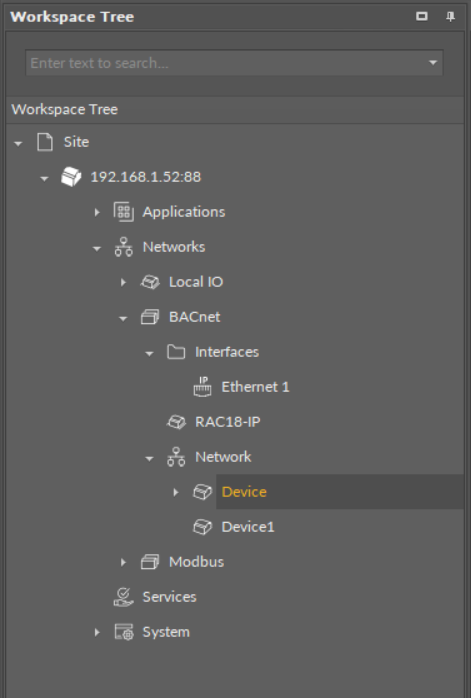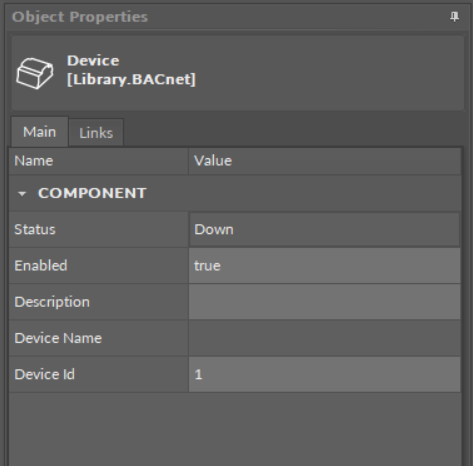The Device component represents a remote BACnet device, which the local BACnet device exchanges data with, as a client device. It allows to configure data for communication with remote server devices, add them to the network, connected on the IP port, and set their unique device IDs. If there is no response from the server device, the Device component goes into the Down status.

The Device component
Slots

The Device components slots
The Device component has the following slots:
-
Status: indicates the current status of the component; if the component works properly, its status is OK. The component becomes Disabled, once the Enabled slot is in false or null. The component's status is Fault, once the Device Id slot is null. If there is no response from the addressed device, the component goes into the Down status.Available information: Disabled, Fault, Down, OK.
-
Enabled: change of the slot's value enables or disables the component.Available settings: true (enabled), false (disabled).
Note: If the Enabled slot is in false (meaning the component is disabled), the Status slot becomes Disabled.
-
Description: an additional detailed information about a component that may be freely described by the user; the description may contain individual coding, defined in the user's system documentation, meter's or sensor's location, or any other information the user finds applicable.
Note: The description is effectively added only if the remote device allows it–the description is not added internally in the RAC18-IP for the remote device, but it is sent directly to the remote device.
-
Device Name: shows the name from the remote BACnet device identified in the Device Id slot;
-
Device Id: allows to set the unique ID of the remote device in the BACnet network.
Worth to Notice
If the Network component is disabled, the Device component is disabled too.
